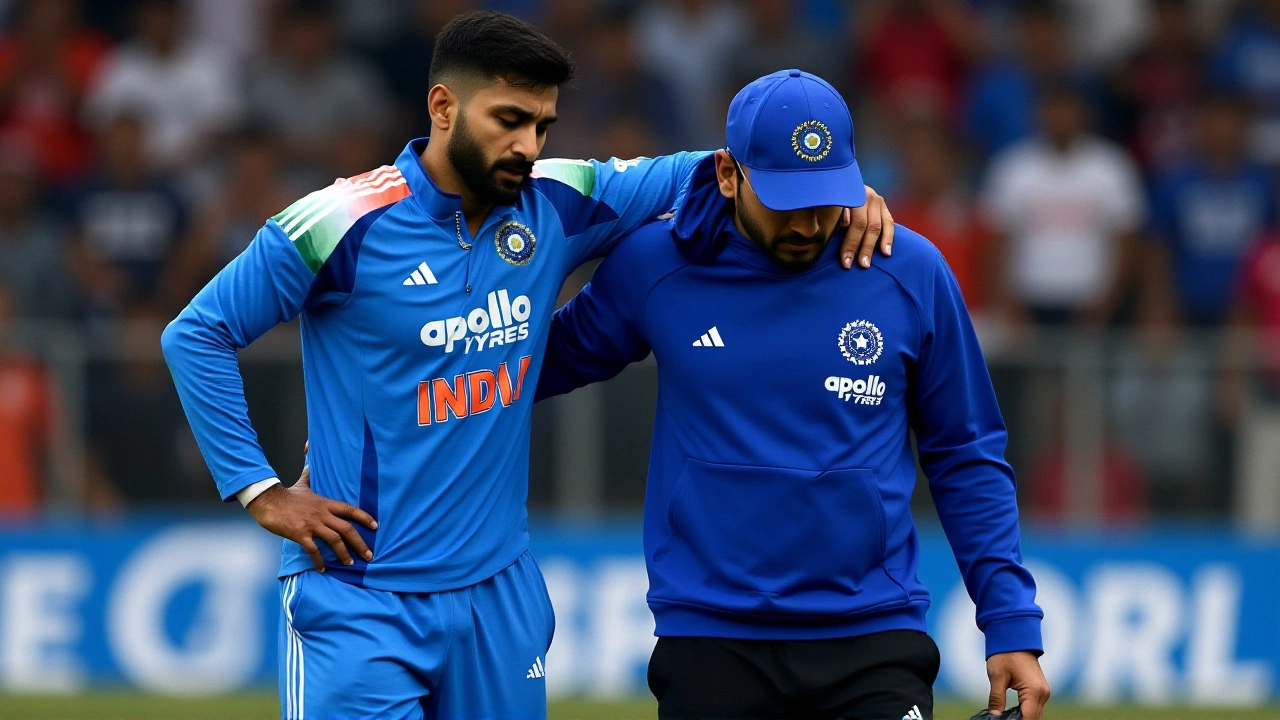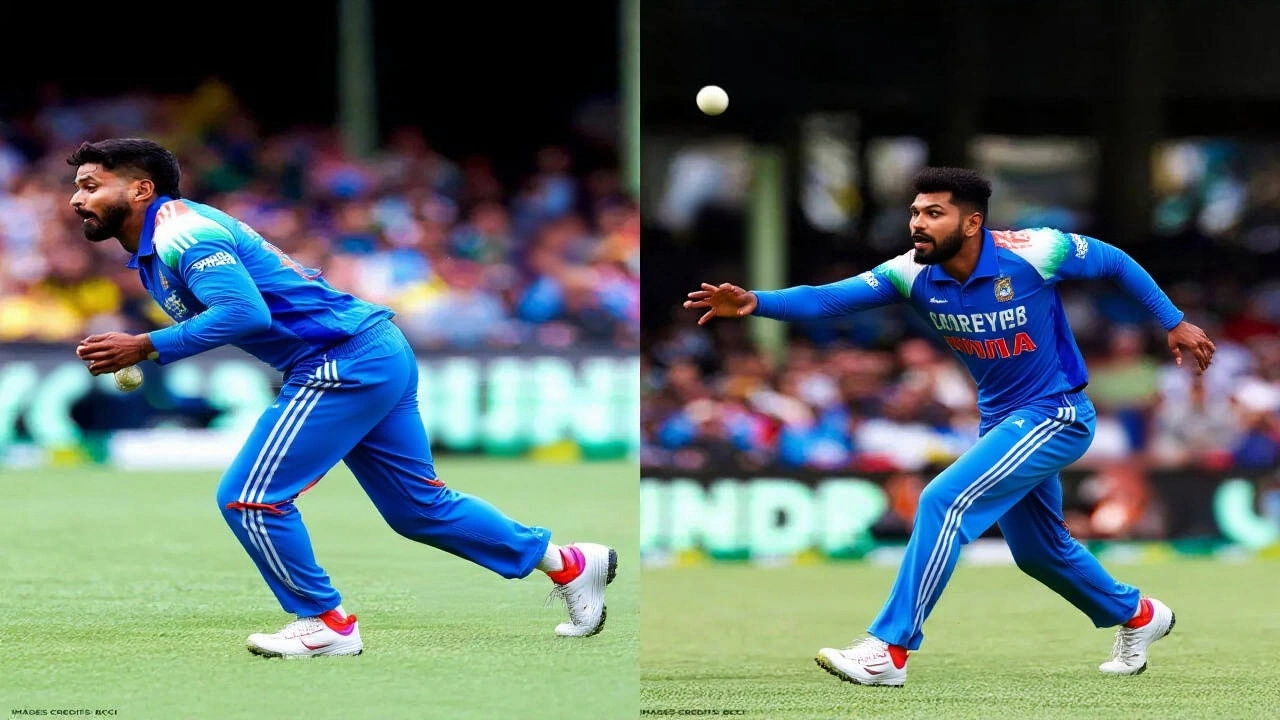When Shreyas Iyer dove for a catch at the Sydney Cricket Ground on October 25, 2025, he didn’t just risk his body—he nearly lost it. The Board of Control for Cricket in India (BCCI) medical team’s lightning-fast response in the dressing room that afternoon didn’t just stabilize him—it saved his life. A fractured rib, driven inward by the force of the catch, had torn his spleen. Around 500 milliliters of blood pooled in his abdomen. Without immediate intervention, hypovolemic shock would have killed him within hours.
What Happened at the SCG?
It was the third and final ODI between India and Australia. Iyer, batting at number four and serving as vice-captain, lunged left to take a sharp catch off Alex Carey’s edge. He landed hard on his left side, clutching his ribs as he rose. At first, it looked like a routine injury. But within minutes, his face turned pale. His pulse dropped. Team physician Dr. Prasanna Shah noticed the signs: low blood pressure, tenderness in the lower left quadrant, and a rigid abdomen. He didn’t wait. He ordered an immediate transfer to St. Vincent’s Hospital Sydney, located just 3.5 kilometers away.
By 4:15 PM AEDT, Iyer was in the emergency bay. CT scans confirmed the worst: a Grade III splenic laceration with active bleeding. Surgeons debated open surgery, but Iyer’s vitals were holding. The decision? Conservative management. Strict bed rest. ICU monitoring. Blood transfusions. No movement. No risks.
The BCCI’s Emergency Response
What made the difference wasn’t just the hospital—it was the BCCI’s preparedness. Dr. Anant Singh, the BCCI’s Chief Medical Officer, had already pre-arranged protocols for overseas tours after the 2023 World Cup incident involving a player with a similar injury. This time, it worked.
Within 90 minutes of the injury, Dr. Singh had video-linked with trauma specialists at Royal Prince Alfred Hospital in Sydney and gastroenterology head Dr. Harish Kumar at Apollo Hospitals in Delhi. They all agreed: no surgery unless he deteriorated. The BCCI didn’t just send a doctor—they sent a contingency plan.
By 10:30 AM IST on October 27, the BCCI issued a statement: “Immediate action saved his life.” Those six words carried the weight of a near-tragedy averted. Iyer was stable. Conscious. Breathing on his own. But the road ahead? Long.
Who’s Affected—and What’s Next?
Iyer’s absence will ripple through Indian cricket. He’s not just a top-order batter—he’s a calm head in pressure situations. With 2,458 ODI runs and 3 centuries, he’s been the anchor since taking over as vice-captain in July 2024. His likely absence from the three-Test series starting November 22 in Adelaide, and possibly the ICC Champions TrophyPakistan and UAE, leaves a gaping hole.
Meanwhile, Cricket Australia’s CEO Nick Hockley sent a personal message of support. “Cricket is more than competition,” he said. “It’s community.” That sentiment echoed across social media—from former captains to school kids in Mumbai.
The BCCI has already formed a safety review committee, led by Dr. Singh, to overhaul medical protocols for overseas tours. Recommendations are due by November 8. Expect changes: mandatory on-field ultrasound units, faster evacuation routes from stadiums, and real-time telemedicine links with Indian specialists.

A Family’s Wait
On October 28, Iyer’s mother, Smita Iyer, and brother, Saransh Iyer, boarded a chartered flight from Mumbai. They arrived at 8:00 AM AEDT on October 29. “We didn’t want him to wake up alone,” Smita told reporters outside the hospital. “He’s always been the one holding us together.”
Doctors estimate a 6-8 week recovery. No batting. No fielding. No running. Just healing. His return to cricket, if it happens, will be gradual. But for now, the only goal is simple: get him home.
Frequently Asked Questions
How serious is a spleen laceration from a rib fracture?
A spleen laceration caused by fractured ribs is a medical emergency. The spleen is fragile and packed with blood vessels. A direct blow can cause it to tear, leading to internal bleeding. If untreated, losing 500ml or more of blood can trigger hypovolemic shock, which can be fatal within hours. Conservative treatment is possible if the patient is stable, but delays are deadly.
Why didn’t they operate on Shreyas Iyer immediately?
Despite the severity, Iyer’s vital signs remained stable, and the bleeding wasn’t actively worsening. Surgeons at St. Vincent’s and consultants in Delhi agreed that surgery carries its own risks—especially infection and prolonged recovery. Conservative management with ICU monitoring was the safer path, allowing the spleen to clot and heal naturally, which is now the preferred approach for stable Grade II–III injuries.
What role did the BCCI medical team play in saving Iyer’s life?
The BCCI’s team didn’t wait for symptoms to worsen. Dr. Prasanna Shah recognized internal bleeding within minutes using clinical signs, bypassing the usual ‘wait-and-see’ approach common in sports medicine. Their pre-established links with Sydney hospitals, rapid transport, and real-time specialist consultations ensured Iyer received expert care within 45 minutes of injury—a timeline most international teams aren’t prepared for.
Will Iyer ever play cricket again?
Medically, yes—most athletes return fully after splenic injuries if managed properly. But cricket demands explosive movement, sudden stops, and physical contact. His recovery will be cautious. The BCCI will likely restrict him from fielding for at least 10 weeks. Whether he returns for the Champions Trophy depends on his progress, but experts say a full comeback by mid-2026 is realistic.
How common are such injuries in cricket?
While fractures and sprains are common, life-threatening internal injuries like Iyer’s are rare. The last comparable case was in 2019, when a domestic player in India suffered a splenic rupture after being hit by a bouncer. Cricket’s protective gear has improved, but fielding—especially diving catches—remains high-risk. This incident has already sparked calls for mandatory chest protectors in international ODIs.
What changes can we expect in cricket’s medical protocols?
The BCCI’s review committee is expected to recommend portable ultrasound devices for touring teams, mandatory 24/7 telemedicine access with home-country specialists, and faster evacuation protocols from stadiums. Some experts are also pushing for mandatory rib and spleen screening for all international players before major tours. This isn’t just about Iyer—it’s about preventing the next one.

